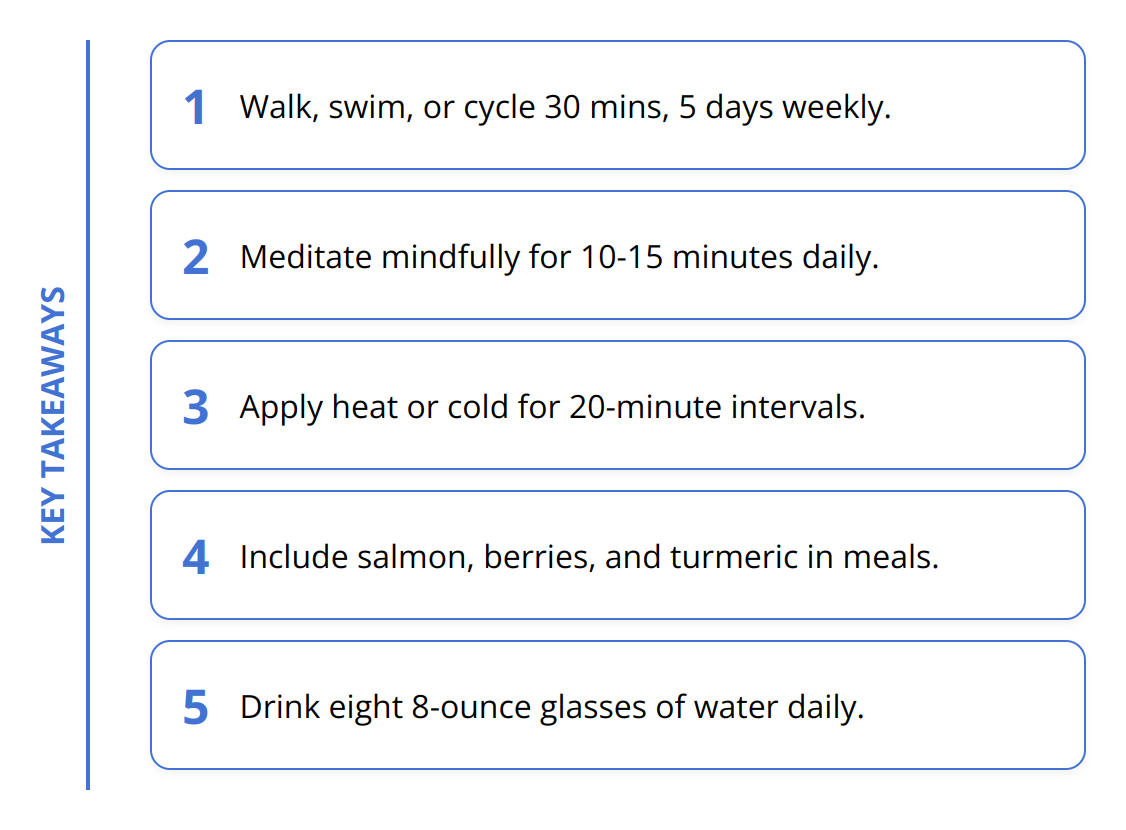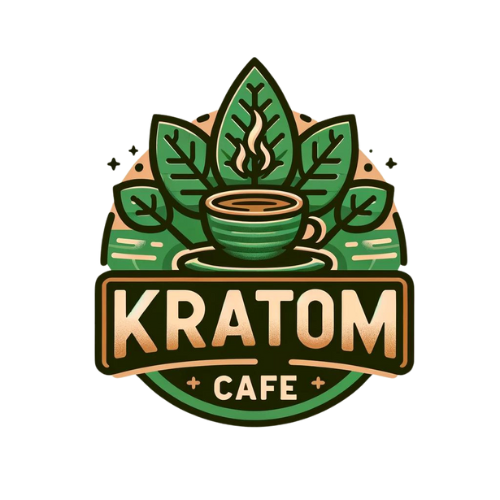When it comes to managing pain, natural methods can be highly effective and beneficial.
We at Kratom Cafe have gathered various techniques and dietary suggestions to help you find relief.
Explore these natural options and see what works best for you.
How to Reduce Pain Naturally
Reducing pain through natural methods can be remarkably effective. Incorporating these techniques into your daily routine may provide much-needed relief.
Exercise and Physical Activity
Staying active is fundamental for pain management. Regular exercise can enhance flexibility, strength, and overall well-being. Studies show that low-impact activities such as walking, swimming, and cycling can significantly reduce chronic pain symptoms. Aim for at least 30 minutes of moderate activity five days a week. Regular physical activity increases the production of endorphins, the body’s natural painkillers, and reduces inflammation.
Meditation and Mindfulness
Mindfulness and meditation practices are powerful tools for managing pain. Research indicates that mindfulness meditation can reduce the perception of pain and decrease stress, which often exacerbates pain. A study from the Journal of Neuroscience found that participants practicing mindfulness meditation experienced a 40% reduction in pain intensity. Incorporating even just 10-15 minutes of mindfulness or meditation into your daily routine can lead to noticeable improvements in pain management.

Heat and Cold Therapy
Applying heat or cold to the affected area can provide immediate pain relief. Heat therapy, such as warm baths or heating pads, can help relax muscles and increase blood flow, which promotes healing. On the other hand, cold therapy, like ice packs, can reduce inflammation and numb sharp pain. Alternating between heat and cold can be particularly beneficial for conditions like arthritis or back pain. However, it’s important to use these therapies correctly—apply heat or cold for no more than 20 minutes at a time and always use a protective barrier to prevent skin damage.
Practical Tips:
-
Heat therapy: Utilize heating pads, warm baths, or hot water bottles.
-
Cold therapy: Use ice packs, gel packs, or frozen vegetables.
Implementing these natural techniques can provide effective pain relief without relying on medication. Adopting regular exercise, practicing mindfulness, and correctly using heat and cold therapies can make a significant difference in managing pain. For more practical tips on natural pain relief, explore practical tips.
Can Your Diet Help Reduce Pain?
One often overlooked aspect of managing pain is diet and nutrition. What you eat can have a significant impact on your pain levels. Incorporating specific foods and staying hydrated can make a difference.
Anti-Inflammatory Foods
Eating foods that combat inflammation is crucial for pain relief. Studies show that anti-inflammatory foods can reduce symptoms of conditions like arthritis and chronic pain. Foods rich in omega-3 fatty acids such as salmon, walnuts, and flaxseeds can lower inflammation. Additionally, fruits like berries and vegetables like spinach are high in antioxidants, which fight inflammation.
In a study published in the Journal of Pain Research, patients consuming a diet rich in anti-inflammatory foods reported a 21% reduction in pain severity over three months. Including turmeric in your meals is another great option. Curcumin, the active ingredient in turmeric, has shown promise in reducing inflammation and pain in multiple studies.

Practical Tips:
-
Include salmon, walnuts, and flaxseeds in your diet.
-
Eat a variety of berries and leafy greens.
-
Add turmeric to your meals.
Hydration and Pain Management
Staying hydrated is essential for overall health, but it’s especially important for pain management. Dehydration can increase pain perception, making symptoms feel worse. The Mayo Clinic recommends drinking at least eight 8-ounce glasses of water per day. For people with chronic pain, adequate hydration helps maintain joint lubrication and can prevent muscle cramps.

Herbal Supplements and Spices
Herbal supplements and spices can be powerful allies in pain management. Ginger, for example, contains compounds that reduce inflammation and pain. A 2014 study found that ginger supplements were as effective as ibuprofen for pain relief in participants with osteoarthritis.
Other effective options include:
-
Boswellia: Known for treating arthritis and asthma.
-
Cloves: Contains eugenol, which is effective for toothache and muscle pain.
-
Peppermint oil: Offers pain relief when applied topically.
Incorporate these into your daily routine to see their benefits. However, it’s essential to consult with a healthcare professional before starting any new supplements to avoid potential interactions.
For more information on combining diet and herbs for pain relief, check out natural remedies.
By focusing on anti-inflammatory foods, staying well-hydrated, and using herbs and spices, you can significantly impact your pain levels without relying on traditional pain medications.
What Alternative Therapies Reduce Pain?
Acupuncture has been around for centuries and continues to gain traction for its effectiveness in pain management. It involves inserting fine needles into specific points on the body to balance energy flow. Research shows that acupuncture is particularly effective for conditions like knee osteoarthritis and migraines. For example, a study published in the Archives of Internal Medicine found that acupuncture reduced pain and improved function in patients with osteoarthritis of the knee by 40%. While some might be concerned about the needles, most patients experience minimal discomfort.
Chiropractic care focuses on spinal adjustments to improve alignment and function. Many people find relief from back pain, neck pain, and headaches through chiropractic techniques. A 2017 study in JAMA Network Open revealed that chiropractic care resulted in a 30% reduction in back pain over six weeks. Regular adjustments can also improve mobility and overall spinal health. It’s particularly beneficial for those suffering from chronic back issues or posture-related pain.
Aromatherapy uses essential oils to provide therapeutic benefits. Lavender oil, for example, has been shown to relieve pain and stress significantly. Research published in the Journal of Medical Association indicates that rubbing peppermint oil on the temples can reduce headache symptoms by 50%. Essential oils can be used in various ways such as inhalation, topical application, or even added to baths.
Practical Tips:
-
Acupuncture: Seek a certified practitioner. Sessions typically last 30-60 minutes.
-
Chiropractic care: Consistency is key. Regular visits amplify benefits.
-
Aromatherapy: Use a diffuser for inhalation or mix oils with carrier oil for topical use.
Incorporating these alternative therapies into your pain management routine can provide substantial relief. While each has unique benefits, many people find the best results through a combination approach. For further exploration, you might consider chronic pain solutions for a comprehensive understanding of various methods.

Conclusion
Incorporating natural methods into your pain management routine can be both effective and beneficial. We’ve covered a range of techniques, including exercise, mindfulness, heat and cold therapy, anti-inflammatory diets, hydration, herbal supplements, acupuncture, chiropractic care, and aromatherapy. Each offers unique benefits and can significantly impact pain levels.

When choosing the right approach, consider starting with what feels most accessible and manageable for your lifestyle. Some people find immediate relief with simple methods like heat therapy or dietary changes, while others may benefit more from structured activities like regular exercise or chiropractic care.
Exploring natural options can reduce your reliance on medications and minimize potential side effects. It’s essential to experiment and find what works best for you. Keep in mind that combining multiple methods often yields the best results.
For additional insights and practical tips, explore our extensive guides at Kratom Cafe. Our platform offers up-to-date information and community support to help you navigate the world of natural pain relief.

